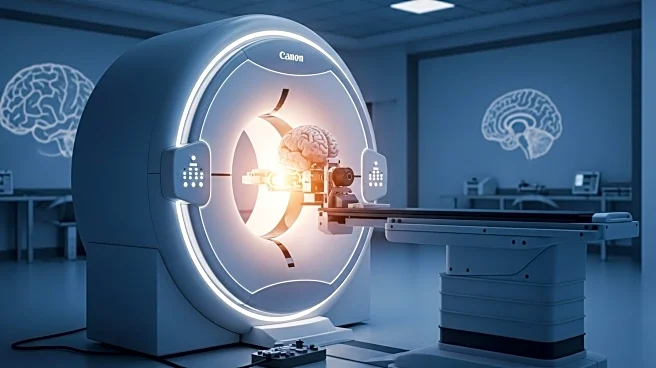What's Happening?
Boston University is spearheading a significant study to develop methods for detecting chronic traumatic encephalopathy (CTE) in living patients. This initiative is funded by a $15 million grant from the National Institutes of Health and involves collaboration with the Brain Health Imaging Center at the Center for Addiction and Mental Health in Canada. The study aims to identify biomarkers that can reveal the presence of CTE, a degenerative brain disease often associated with repeated head injuries, particularly in NFL players. Currently, CTE can only be diagnosed posthumously by examining brain tissue for tau protein tangles. The research seeks to find a similar biomarker detectable in living patients, which could lead to early diagnosis and preventative measures.
Why It's Important?
The ability to diagnose CTE in living patients could revolutionize the approach to managing and treating the disease. Early detection would allow for the implementation of preventative strategies and treatment plans, potentially reducing the incidence of severe symptoms such as violent mood swings, suicidal thoughts, and dementia. This advancement could significantly impact the lives of athletes, military personnel, and others at risk of repetitive head trauma. Moreover, it would provide families with the opportunity to plan for the future, both financially and emotionally, as they navigate the challenges associated with CTE. The research could also lead to changes in sports protocols and safety measures, further protecting individuals from the long-term effects of head injuries.
What's Next?
Researchers at Boston University and their partners are focused on developing brain-imaging agents that can detect CTE in its early stages. If successful, this could lead to widespread testing and early intervention strategies. The NFL and other sports organizations may need to reassess their safety protocols and concussion management practices in light of new diagnostic capabilities. Additionally, the study's findings could prompt further research into treatment options for CTE, offering hope for those affected by the disease. As the research progresses, there may be increased advocacy for awareness and education about CTE, aiming to reduce stigma and improve support systems for patients and their families.
Beyond the Headlines
The ethical implications of diagnosing CTE in living patients are significant. It raises questions about privacy, employment, and insurance for those diagnosed. There is also the potential for increased scrutiny of sports organizations and their responsibility to protect players. The research could lead to broader discussions about the cultural acceptance of contact sports and the prioritization of player safety over entertainment value. Long-term, the study may influence public policy regarding sports safety regulations and healthcare provisions for individuals with CTE.












